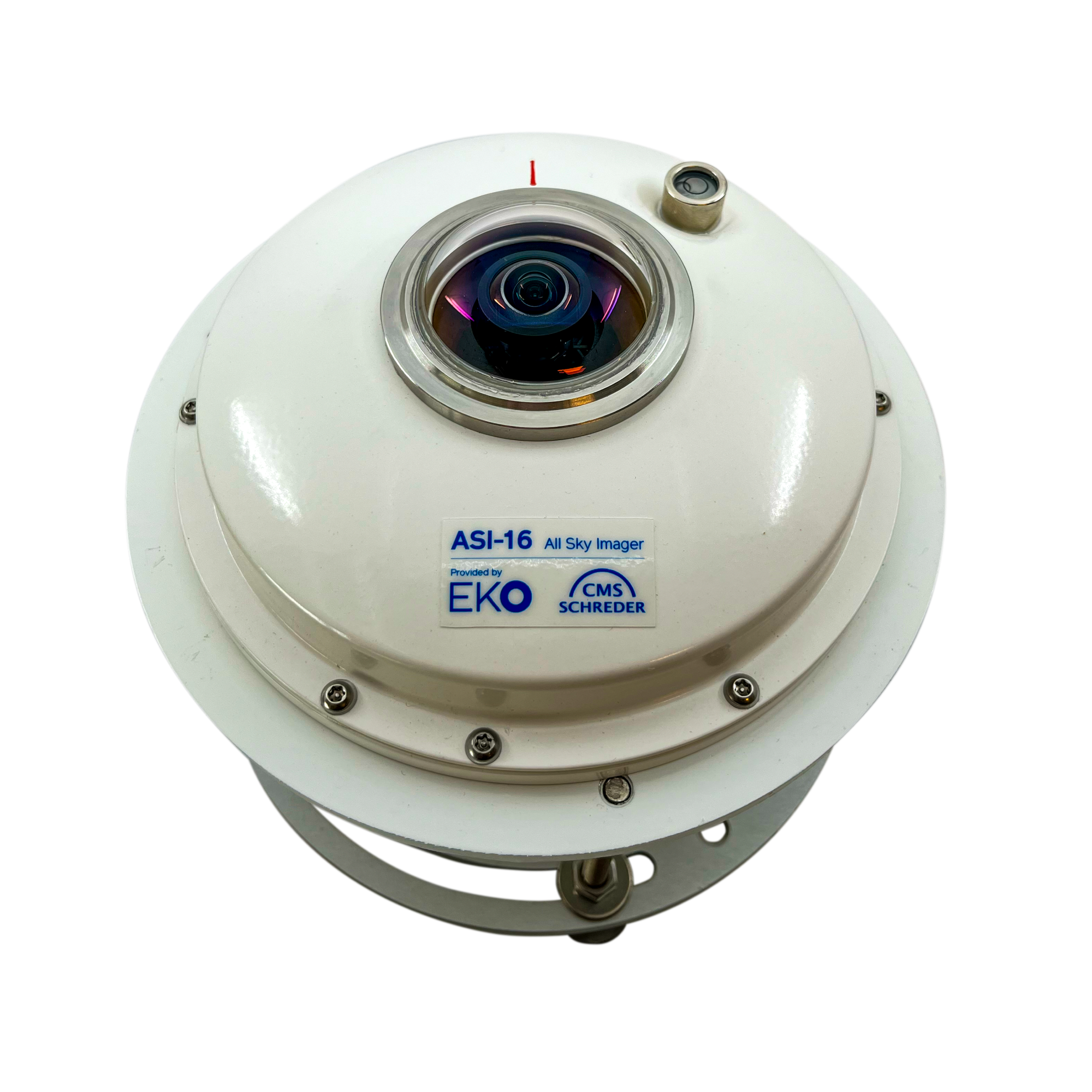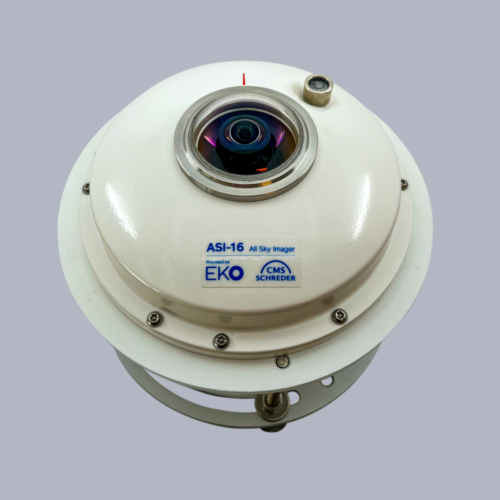ASI-16 Base
All Sky Imager

Automatic All Sky Camera
The ASI-16 Base All Sky Imager is an automatic camera system with a 180° field of view, utilising a 5MP camera and 'fisheye' lens with an anti-reflective coated quartz dome.

ASI-16 Base
The ASI-16 Base All Sky Imager is an automatic camera system with a 180° field of view, utilising a 5MP camera and ‘fisheye’ lens with an anti-reflective, airflow protected, quartz dome.
Dual side surge protection, and wide operating temperature, among other features, position the ASI-16 as one of the most reliable all-sky cameras available.
Developed by CMS-Schreder, the ASI-16 All Sky Imager is recommended and sold worldwide by EKO for remote sensing, weather and cloud observations, atmospheric research, supervision systems, aircraft-based observation systems, and other applications.
The system can be used for cloud coverage and cloud type analysis, with cloud base height (CBH) and cloud motion functions. It delivers high-resolution HDR images of the sky and clouds as pre-scheduled network stored JPGs and as a live video stream. It’s also a powerful cloud detector and can also take clear full hemispheric pictures of the sky during daylight, even under full sunlight conditions.
The ASI-16 includes a dedicated sensor interface to connect temperature and humidity sensors, plus an optional pyranometer.
Key Features:
- 5MP Fisheye Camera
- Real-time video & picture stream, up to 2-10 f/sec
- Cloud Base Height (CBH) & Cloud Motion Functions
Resources
Documentation
Accessories
Frequently Paired Together
| Integrated Ventilation & Heating | No |
|---|---|
| Camera | 5MP CMOS / 1 x 1.8" |
| Operation | Daytime |
| Field of View | 180° |
| Images | HDR JPG |
| Operating temperature range | -25 to 50°C |
| Power supply | PoE 48V |
| Power Consumption | 15 W |
| Cable length | 10m |
| Dimensions mm | ø180 x 200 |
| Software | Web browser / Trinity for Windows 7 to 10 |
| Cloud Base Height Software | 2 x ASI-16 required |

